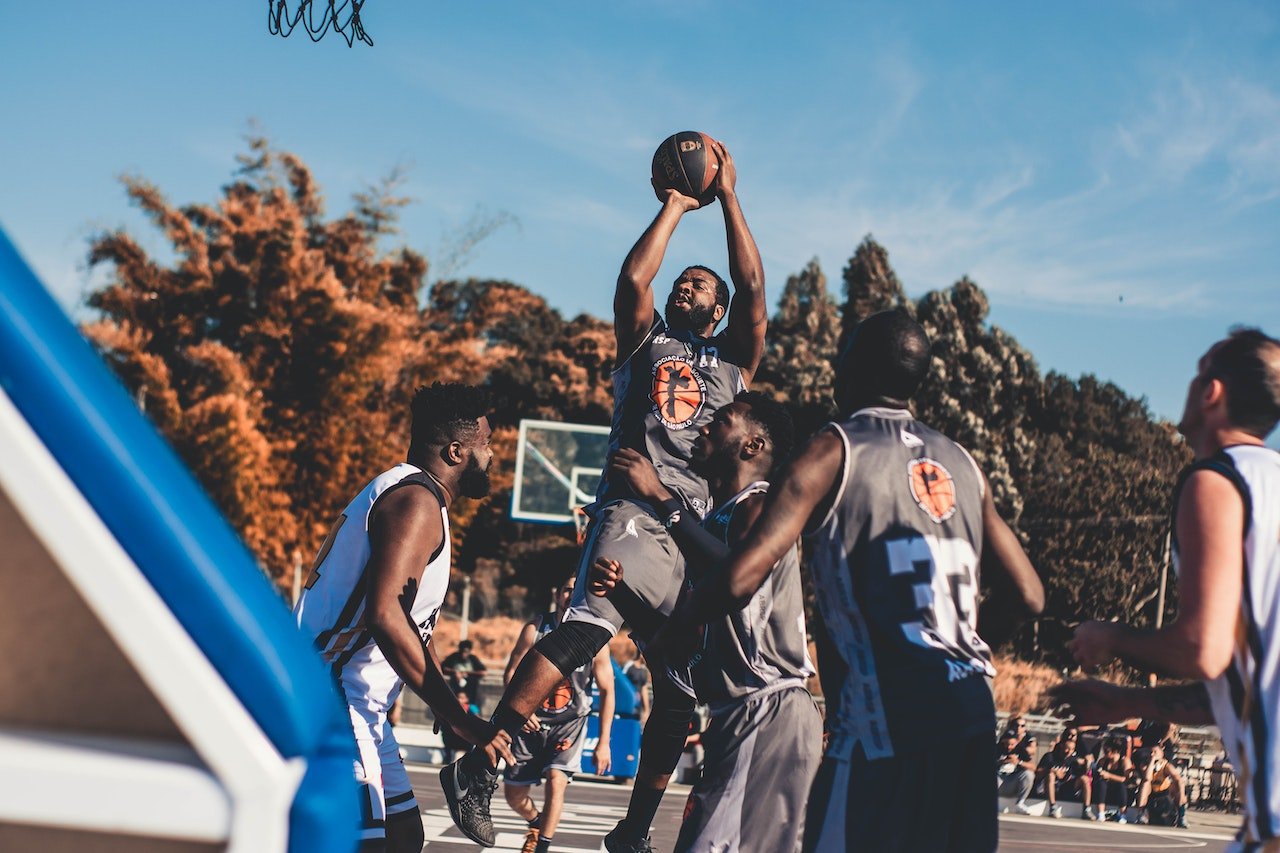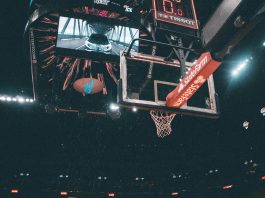
The game of basketball is a hobby for millions of people worldwide. Many companies use the game of basketball as one of the methods of team building. One example is a company that provides paper writing services. Once a month, they hold a mini basketball tournament for their employees. Particular results in the game to date have been achieved in the United States. It is where the most potent NBA league is located. Here play the best of the best. But to get there, you have to work long and hard. Today let’s talk about the basics and look at the defense in basketball. Even though the offense makes the game spectacular, the protection brings titles to the game! Let’s start to understand the question.
Defense and Offense in Basketball
The basic technique is taught early in childhood. It’s essential to teach a child attending a basketball class to attack and defend in the game. They should do this, so the player understands that basketball is a team game, not an individual running around the court trying to attack the basket against all odds. Unfortunately, more than half of the starting players have this tendency in the early stages of training.
A good coach will help put the technique into a child’s hands. Defense in basketball is an integral part of the game and should not be ignored or treated with a lazy eye. It is an important point. By the way, it should be noted that defensive actions can be very spectacular. In general, everything in basketball depends on the players, their technique, and grace, not tactics or position.
Defensive Tactics in Basketball
In modern basketball, there are three main defensive tactics. Of course, there are different combinations and variations of these tactics, but the fundamental ones are:
- zone defense in basketball;
- pressing;
- Personal defensive actions (personal guarding).
Let’s take a closer look at each tactic and identify the specifics.
Zone
Defensive play in basketball by zone defense tactics means each defensive player plays in their assigned zone. Defensive players play only in their court area and do not leave it. Defensive actions are carried out against the opponent who enters this floor area. Leaving the zone is only possible to back up a “failed” in defense of a teammate.
Amateur teams use this defensive tactic, but not in the early stages. Zone defense is a fairly complex interaction between players even at the amateur level of play, let alone on professional teams.
Zone defense is a way of combating passes under the basket and provoking opponents to shoot from a distance. It also makes up for the players’ decreased athleticism. Zone defense means less movement for the defensive side and more stamina for the rest of the game.
If we talk about the weaknesses of zone defense, they include the difficulty for inexperienced defenders to identify zone junctions with a teammate. For this reason, the defenders cannot get to the ball so the opponent will make the shot without resistance.
Zone defense is an ineffective way to defend against teams with established three-point shooters. Also, the opposing coach can make a play where his best player will attack from the zone where the opponent’s weakest defender is defending.
Personal Defense
In this case, each defensive player plays against their assigned opponent, regardless of the location in the attacking actions of the latter. A defensive player can switch to another offensive player if a teammate makes a mistake and the opponent goes into the pass. Personal defense is widespread at the amateur level, although professional teams also employ it.
The personal defense has proven to be suitable for protection against teams that like to shoot from medium to long range. But personal security does not work well against teams that make a lot of passes under the basket. Opponents can use perimeter passes to stretch defenders around the court, preparing and freeing up an area for a partner’s access. When the defenders stretch enough, a pass will be made to the player who makes the pass and is likely to put the ball in the basket.
Pressing
This very aggressive tactic requires the defensive players to be in good physical condition. The defense, in this case, starts from the opponent’s line. In other words, after scoring the ball, the players do not go to their half of the court but begin to actively interfere with the opponent’s play right in his territory. It is possible to consider this defense tactic in basketball an aggressive personal defense.
This defense is chosen either by fairly trained amateur or professional teams. This tactic can break the game completely if you talk about amateur basketball due to its infrequent use and the lack of experience against this type of defense. Pressing is not only a defensive tactic but also an offensive one.
Choice of Tactics
The coach is always in charge of tactics. He knows what’s going on on the court and how to intervene to keep a winning score or make up the deficit.
Drawing on his experience, coaches can change their defensive tactics several times per quarter, not per game! This tires out the opponent and causes him problems because the opponent also has to change his style of play to suit each type of defense.
Modern tactics on professional teams are hybrids of several standard types of defense. For example, one player on the defending team may play a personal defense tactic against the offensive leader, and the other players may play a zone defense. There are many variations and modifications of security in modern basketball, especially when it comes to professional players in the world’s top leagues!
A Tribute to the Times
With today’s highly trained players and top-notch equipment and gear, defenses are becoming more challenging to defend as the speed and tempo of the action on the court can be exorbitant. Defense and offense in basketball are an arms race on the court.
Some teams prefer to play at first choice, while others play from the opponent and the defense. These are just characteristics of the tactics and style of play promoted by the team’s coach. You can’t say that an aggressive attack is always a winner or that deep defense and tenacious play is the right way to the championship.
Everything is very complicated and individual, not only for a particular opponent but even for a particular period of the same game. Basketball at the highest level is amazingly imaginative. It applies to both offensive and defensive actions.
Best Tips for Defence
The coach hands the right tips for defensive actions and does it during practice. In general, training should be such that defensive technique in basketball is brought to automatism. It is accomplished by trial and more methods! But there are some general tips to be aware of, especially in the early stages of learning to defend in basketball.
You can’t throw yourself too much at a player when you’re on defense. It can cause a technical player to pass you on the dribble easily. Only throw forward for an interception when you are sure you can intercept the ball. Interceptions are best made by nimble point guards who defend farther from their basket.
Always try to guard your partner. Basketball is a team game, and teamwork is essential. But you have to back up your partner wisely because by switching from your player (or your defensive zone) when backing up, you are dropping your player (or your court area), which is a free zone. What are the options for technically playing the ball on offense? Back up wisely, trying to outsmart your opponent. For example, advance on an opponent who was guarded by your partner but failed that action, and then if you see your opponent with the ball trying to play an extra player, go back to your opponent left behind and intercept the ball. In general, all of this will come with experience.
As a rule, for most novice basketball players, the coach does not choose to press as a style of play on defense because such a defensive scheme requires severe physical training and the most coherent action of the team. And at the entry-level, amateur teams have no such skills.
And, perhaps the most correct and the best advice is training. Exhausting training is the key to short and well-coordinated teamwork and aligning the actions in the defense or attack. Training, skill, and talent are excellent for actual championship players!
Bottom Line
Defense is an essential part of any fluid team ball game. Basketball is no exception to these rules. In many ways, defensive actions determine the outcome of the game. One team’s defense is the other team’s offense. Defense and offense are inseparable, which is why you should never underestimate defense in basketball.
The right basketball tactics are half of a team’s success. The other half is the interactions within it and the players’ personalities. Of course, luck is always part of the equation, but you can’t win a title with luck alone!






